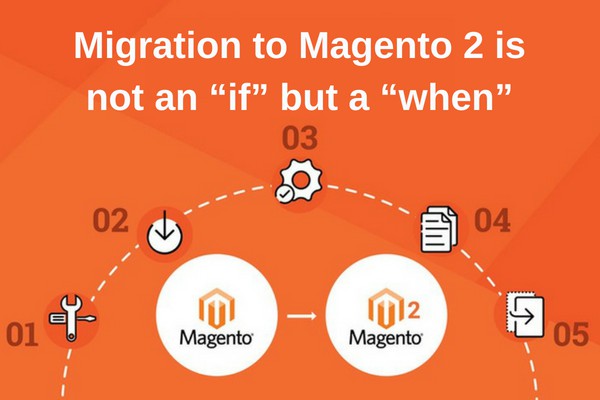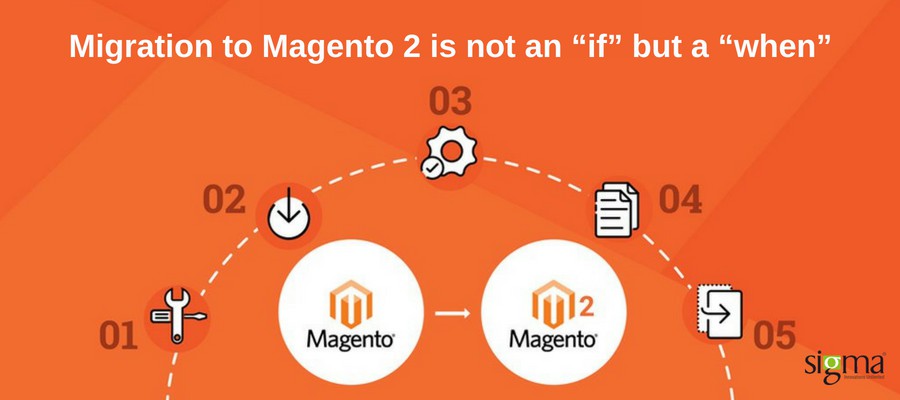 Reading Time: 4 minutes
Reading Time: 4 minutes

For e-commerce site owners that are currently using Magento 1.x for their store, the when or if they should be moving over to Magento 2 is likely to be a question on their mind. We have put together some information designed to help online retailers understand the questions to ask when considering the move and also the reasons why they need to make the move.
Common Misconceptions
1. “My Site is running seamlessly, I may not need a migration.”
Magento 2 has better site speed, performance, enhanced visibility into business results, and better omnichannel commerce experiences. It is also a major update and we understand the decision to do so is not an easy one. If there are a lot of versions in between the Magento 1 platform you’re running on and the one you would upgrade to, we would advise to not spend time and budget on upgrading to a later version of Magento 1. There have been no new features added to Magento 1 and those using the platform will have to make this move in the next few months anyway, as Magento is not supporting Magento Commerce 1.X past 2018. The ideal option is to move to Magento 2 even though this may cost more in the short term.
Of course, no one can force you to make the switch, and most likely you’ll be able to find partners that would help you maintain your store even after the support was cut, but it is definitely a costlier option in the long run.
2. “Why is this called Migrating? Isn’t this a simple version upgrade”
When making the move from Magento 1 to Magento 2 it’s probably better not to view it as an upgrade, but rather as a re-platforming project. That’s because, unlike going from Magento 1.7 to Magento 1.9, for example, there’s no direct upgrade path. Of course, much of the functionality remains using improved and optimized logic, with many new features and a redesigned admin panel.
3. “Data mapping is easy and can be done quickly”
We need to understand that there is a lot of differences in the structure and format of data between Magento 1 and Magento 2. This is declared in the mapping files. If the mapping is not done properly, then there will be errors in data migration, leading to delays in delivery. Essentially Magento 2 migration involves four components:
- Extensions
- Custom code
- Themes
- Customizations.
4. “Isn’t it easy to have the same functionality as my current site?”
One can definitely retain the same functionality of their Magento 1 website to their Magento 2 site if similar extensions with same features are available. Also, all the custom code will need to be built from scratch as per the Magento 2 coding structure.
The Migration Process
When you have decided to migrate to Magento 2, it’s essential to come up with a detailed migration plan describing when and how certain specific actions will be implemented during the process.
The following basic steps must be included in the plan
1. Review the data that needs to be migrated from Magento 1.x to Magento 2
-
-
- Store
- Categories
- Attributes and Attribute Sets
- Products
- Customers
- Sales Data
- Catalog and Shopping Cart price rules
- CMS Pages and Blocks
- Review and Ratings
- Transactional Emails
- Newsletter
- Tax Rules
-
2. Review the extensions of your existing site
View the current extensions in Magento 1 version and decide which are required in your new store. Find out if the current extensions are available from Marketplace or from other sources in Magento 2 version.
Please note marketplace is the recommended portal to choose extensions for Magento 2.
3. Build and test Magento 2
This step includes a couple of different components; that is, installing Magento 2 and setting up the store with a design and topology like that of Magento 1 site.
4. Plan for Go Live
During this phase, you might need to bear a store downtime for a little while (Magento claims it is only for a few minutes) for reindexing and modification of DNS settings ahead of going live.
The process might, beyond doubt, not exactly as planned. Expect to run across a few issues that you’ll need to resolve. However, understanding, planning and identifying risks beforehand will make the process simple and smooth.
Key Challenges
1. PHP version compatibility
Magento 2.x doesn’t support PHP version below 5.6.x. If you are going to upgrade your Magento 1.x to Magento 2.x, you have to take care of PHP supported versions because most Magento sites are running their Magento 1.9.x on PHP 5.4.x or 5.5.x which is no longer supported by Magento 2.x.
2. MySQL version compatibility
Magento 1.9.x and Magento 2.1.x both support MySQL 5.6. However, the Magento application version 2.1.2 and later are compatible with MySQL 5.7. Therefore, it’s better to upgrade your MySQL to version 5.7, you might also consider using MariaDB or Percona for better performance, as they are also compatible with Magento 2.1.x.
3. Data migration limitations
Magento provides the data migration tool, which helps you migrate your data from Magento 1.x to Magento 2.x but it has some limitations:
- Data Migration tool migrates your data, including products, customer details etc. to Magento 2 but if you have customized the Magento core database structure through third-party modules according to your need on an older version of Magento then you will have to check and change the schema of your tables otherwise it will throw errors.
- Sometimes you have to change the PHP configurations or apache configurations according to your needs because in data migration there might be a timeout, data size exceeded etc.
- You cannot migrate modules compatible with your older version of Magento to the new one. All custom modules need to be customized as per new Magento guidelines.
Driven by the objective of positive outcomes and offering turn-key migration services to its clients, Sigma has gained solid hands-on experience.
We Ensure
- Lossless transition
- Minimum downtime during Go-Live activity
- No impact on the end customers due to the platform migration
- Zero loss in store data
- Optimum Site Performance
- Proper SEO transition
Careful PLANNING and ANALYSIS are the key elements of every project success. That’s why we deliver only individually tailored migration solutions. The solutions that will enable you to reach new heights with the revamped, more advanced platform.

